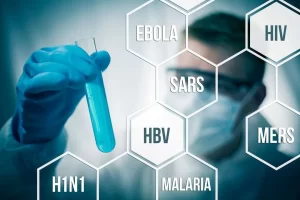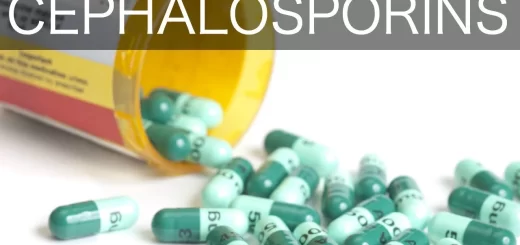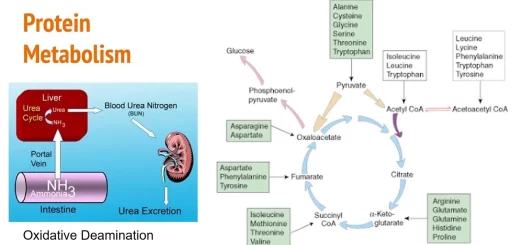Infectious diseases types, Cycle of infection, Microbiological agent, Antigenicity, Infectivity & Pathogenicity
Infection is the entry, development and/or multiplication of an infectious agent in the body of man or animal, Infection is not synonymous with infectious disease, the result of infection may be inapparent (without relevant symptoms or signs) or apparent (with relevant symptoms and signs).
Infectious disease
Infectious disease is a clinically manifest disease of man or animal resulting from infection, Contamination is the presence of living infectious agents on the exterior surface of the body or on the clothes or articles of the person or on any inanimate object in the environment including water and food.
A communicable disease is an illness caused by an infectious agent or its toxic product which can be transmitted directly or indirectly or through a vector from the reservoir to a susceptible host, A contagious disease is a communicable disease that is easily transmitted from person to person by direct contact (e.g. measles, influenza, HIV) or indirect contact (typhoid, cholera, hepatitis).
A non-contagious disease is a communicable disease that is not transmitted through contact with infected persons but it is transmitted through vectors (e.g. malaria) or by spores (e.g. tetanus) or toxins produced by an organism (e.g. botulism and staphylococcal food poisoning).
The incubation period is the time interval from the initial contact with an infectious agent and the appearance of the first signs or symptoms associated with the infection, Knowledge of the incubation period is important for surveillance and quarantine measures for contacts of cases of communicable diseases, Also, to apply preventive measures to abort or modify the attack.
Quarantine is the restriction of the activities of well persons or animals who have been exposed to a case of communicable disease during its period of communicability (i.e., contacts) to prevent the disease transmission during the incubation period if the infection should occur, The latent period is the period between exposure and the onset of the infectious period.
The infectious period or period of communicability: it is the time during which the infectious agent could be transmitted directly or indirectly from an infected person to another, from infected animals to humans or from an infected person to animals, including arthropods, Knowledge of infectious period is important to determine the duration of isolation of cases with communicable diseases.
The isolation is applied to a sick person or animal and it refers to the separation for the period of communicability in such a place and under such conditions to prevent or limit direct or indirect transmission of the infectious agent from those infected to those who are susceptible to the infection or who may spread the agent to others.
Sporadic disease is the occurrence of a few cases of the disease that are separated widely in terms of geographic location and time of occurrence and show no connection to each other.
An endemic disease is the constant presence of the disease or the constant presence of an infectious agent within a given geographic area or population group, It may also refer to the usual prevalence of a given disease within such area or group, e.g. bilharziasis in Egypt, malaria in the tropics, and typhoid, and hepatitis in many developing countries.
The epidemic is the occurrence in a community or region of cases of an illness, clearly in excess of its normal expectancy for the same time of the year, An outbreak is a localized epidemic affecting large numbers of individuals sharing similar experiences (e.g. outbreak of food poisoning in an institution).
Pandemic: An epidemic occurring over a very wide geographical area, crossing international boundaries, and usually affecting a large number of people (e.g. influenza A H1N1 in 2009, COVID-19 starting December 2019).
Reservoir is any person, animal, arthropod, plant, soil, or substance, or combination of these in which an infectious agent normally lives and multiplies, on which the agent depends primarily for survival, and where the agent reproduces itself in such a manner that it can be transmitted to a susceptible host.
Carrier is a human carrier is a person who harbors the infectious agent, without showing any signs or symptoms and is capable to transmit the infectious agent to healthy community members. Zoonosis or zoonotic disease is a primary disease of animals transmitted under natural conditions from vertebrate animals to humans (e.g. rabies and plague).
Herd immunity is the immunity of a group of people or a community, The resistance of a group of people or a community to a particular disease depends on the immunity acquired by a high proportion of individual members of this group or community.
Herd immunity threshold: It is the level of immunity of a population, indicated by the proportion of immune persons, above which the incidence of the disease decreases, The Threshold of herd immunity is variable from one disease to another, it is nearly 80% for smallpox while it is estimated to be 60% of COVID-19.
The concept of Herd immunity is important in planning public health interventions for the prevention and control of communicable diseases, For example, the target of vaccination programs is to raise the vaccination coverage above the level of herd immunity threshold that provides the protection to un-vaccinated individuals, As herd immunity becomes diluted by new individuals born susceptible, vaccination programs are targeting newborns and children to maintain herd immunity level above the critical level.
Cycle of infection
The cycle of infection is a process that begins when an agent leaves its reservoir or an infected person through a portal of exit and is transmitted by some mode of transmission and then enters through an appropriate portal of entry to infect a susceptible host.
Pre-requisites for the perpetuation of communicable diseases:
The six essential elements for the transmission of a communicable disease are:
- Presence of microbiological agent.
- Presence of reservoir of infection.
- Portal of exit through which the microbiological agent leaves the reservoir.
- Mode of transmission.
- Portal of entry or inlet rough which the microbiological enters the host.
- Presence of a susceptible host.
Microbiological agent
The microbiological agent can be a virus, bacteria, rickettsia, protozoan, helminth, fungus or arthropod.
- The organisms have some characteristics that enable them to survive and to spread through the environment including resistance to the physical environment (e.g heat, ultraviolet rays, moisture, dryness, and chemical agents), the ability to survive through the formation of cysts or high resistant spores, production of endo- and exotoxins, and the capacity infect a nonhuman host; animals or birds, or vectors.
- Characteristics of the organisms that are important in the initiation and development of infection and disease include antigenicity, infectivity, pathogenicity, virulence, number of serotypes, serogroups or strains.
Antigenicity
The antigenicity is the ability of the organism to produce specific immunity (stimulation of the immune system to produce antibodies or antitoxin), Antigenicity is measured by the second attack frequency (repeated attacks in the same individual), Second attacks are rare in diseases caused by microorganisms that have high antigenic power (e.g. measles, mumps, and chickenpox) while frequent in diseases caused by microorganisms that have low antigenic power (e.g. common cold, influenza, and gonorrhea).
Infectivity
Infectivity is the ability of the infectious agent to invade and multiply and to produce infection in a susceptible host. Infectivity is measured by the secondary attack rate which is the proportion of exposed susceptible persons who become infected, Examples of diseases with high infectivity are measles, chickenpox, SARS, and COVID-19, Highly infectious diseases are a challenge to public health because they can spread readily in a population.
Infectivity = Infected (symptomatic and asymptomatic) / susceptible exposed
Pathogenicity
Pathogenicity is the ability of organisms to produce specific clinical reactions after infection, Pathogenicity is expressed as the proportion of infected persons who develop observable clinical diseases.
Pathogenicity = clinical disease/infected (symptomatic and asymptomatic).
Diseases with high pathogenicity (e.g. measles and chickenpox) mean that the majority of infections are clinically apparent cases that may pose a burden on clinics, but they can be easily identified and put under control, Diseases with low pathogenicity (e.g. polio, tuberculosis, hepatitis A, HIV) means the majority of the infected population does not show symptoms of the disease, This group of diseases can be problematic for public health prevention because they are difficult to detect and they are difficult to control and prevent their spread.
Virulence
Virulence is the ability of an infectious agent to cause severe illness or death (e.g. rabies, hemorrhagic fevers such as Ebola virus disease), When death is the only criterion of severity, then it is expressed by the case-fatality rate.
Case-fatality rate = deaths from a disease/ clinical cases
You can follow science online on Youtube from this link: Science online
You can download Science online application on google Play from this link: Science online Apps on Google Play
Vaccines types, Live vaccines, Inactivated vaccines, Subunit vaccines, Naked DNA & mRNA vaccines
Cytokines function, use, definition, inflammation & side effects




